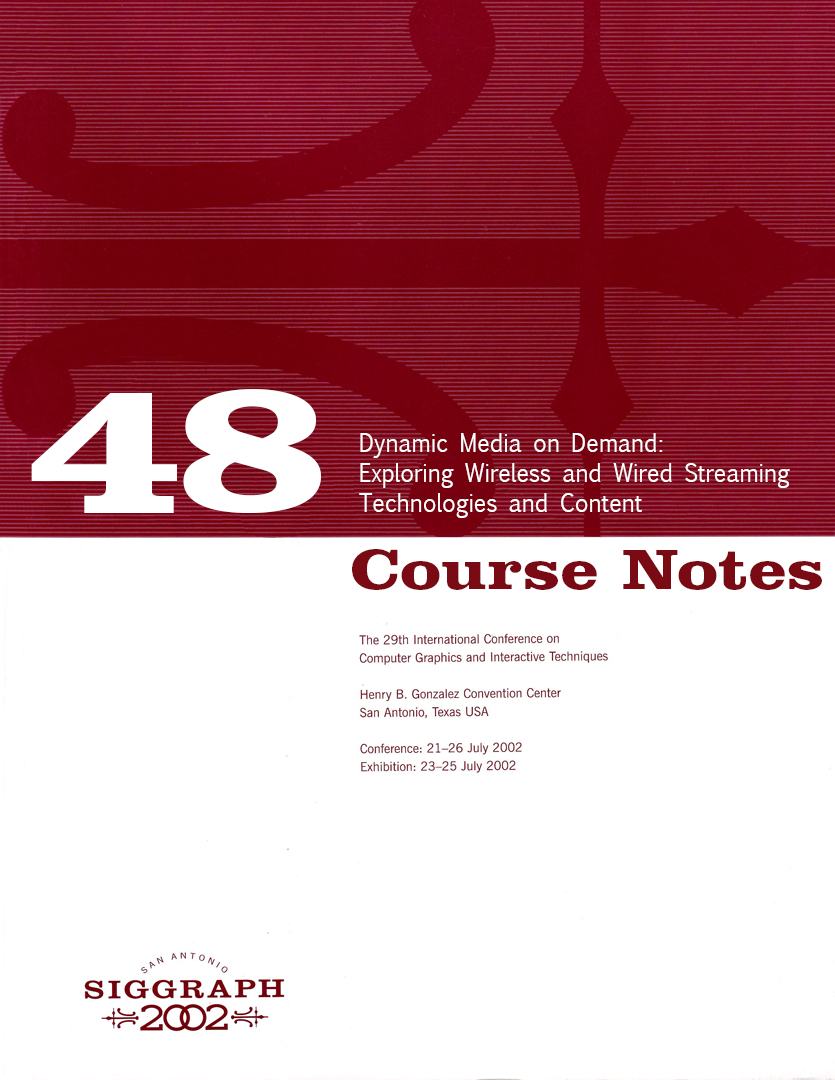“Dynamic Media on Demand: Exploring Wireless and Wired Streaming Technologies and Content” by Rhyne, Bishop, Holmes, Vetter and Turner
Conference:
Type(s):
Entry Number: 48
Title:
- Dynamic Media on Demand: Exploring Wireless and Wired Streaming Technologies and Content
Course Organizer(s):
Presenter(s)/Author(s):
Abstract:
Prerequisites
Understanding of the fundamentals presented in an Introduction to Computer Graphics course and some prior experience in creating computer graphics content or a 3D application. Advanced knowledge of video compression techniques or networking infrastructure concepts is not necessary.
Topics
The course is presented in four modules:
1. Overview of 2D and 3D streaming media in wired and wireless environments. Case study: Project Numina, a multidisciplinary application of handheld computers to enhance student learning.
2. Dynamic media management and architectures. Case study: applications of multimedia rendering on thin clients (Numerical Design Limited).
3. Continuous media in wired and wireless environments. Case study: Who’s online: example of online streaming media content with embedded Web links and other projects from North Carolina State University.
4. Rendering of multimedia (2D and 3D) on thin clients. Case study: Development, architecture, and capabilities of a multimedia information capture, management, and exploitation system at FBI.
Description
This course highlights issues associated with streaming media technologies and delivery of dynamic media and 3D content in wired and wireless environments. It summarizes media architectures and media management (storage, retrieval, and indexing challenges) and compression, coding, and decoding issues. And it reviews protocols and strategies for transmitting content via local, metropolitan, and wide-area wired and wireless networking. Since small, portable, wireless gadgets are becoming ubiquitous, it also addresses multimedia (2D and 3D) rendering on handheld devices, phones, and other thin clients.




